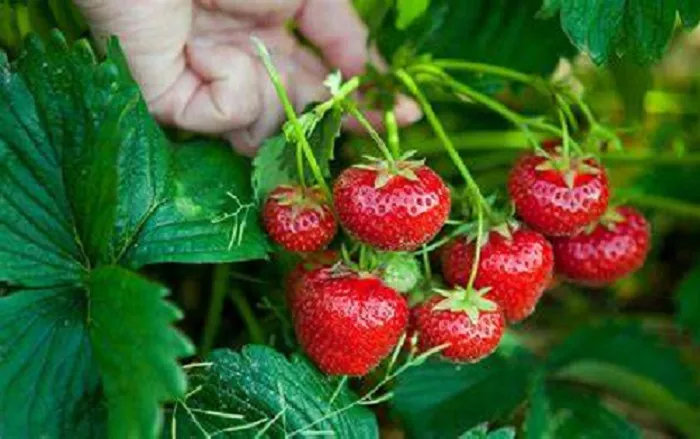Strawberries, those delightful little fruits, are a favorite among gardeners and fruit lovers alike. Whether you’re looking to grow them in your backyard or on a small plot, understanding what strawberry plants need is crucial for a bountiful harvest. From soil conditions to sunlight requirements, this guide will walk you through the essentials, ensuring your strawberry plants thrive.
Soil: The Foundation for Healthy Growth
Strawberry plants are particular about their soil. They thrive in well-drained, loamy soil that is rich in organic matter. A pH level between 5.5 and 6.5 is ideal, as it ensures the plants can absorb nutrients efficiently. To prepare the soil, consider adding compost or well-rotted manure to enhance its fertility and structure. Avoid heavy clay soils, as they can lead to waterlogging and root rot.
Testing Soil pH
Before planting, it’s wise to test your soil’s pH. You can purchase a soil test kit from a garden center or send a sample to a local agricultural extension service. If the pH is too low, adding lime can help raise it. Conversely, if the pH is too high, sulfur can be used to lower it. Regular soil testing every few years will ensure your plants continue to receive the right balance of nutrients.
Soil Preparation Tips
When preparing the soil, till it to a depth of at least 12 inches to break up compacted layers. This allows the roots to penetrate easily and access the nutrients they need. Adding a layer of mulch after planting can help retain moisture, suppress weeds, and regulate soil temperature.
Sunlight: The Energy Source
Strawberries are sun-loving plants. They require at least six to eight hours of direct sunlight each day to produce a healthy yield. Without adequate sunlight, the plants may grow leggy and produce fewer fruits. Choose a planting location that receives plenty of natural light, such as an open area away from large trees or buildings that might cast shadows.
Choosing the Right Spot
If you’re planting strawberries in a garden bed, ensure it is in a location that gets consistent sunlight throughout the day. Raised beds are an excellent option, as they provide better drainage and can be positioned to maximize sun exposure. For those with limited space, container gardening is also a viable option, allowing you to move the plants to follow the sun.
Light Requirements for Different Varieties
Different strawberry varieties may have slightly different light requirements. June-bearing strawberries, for example, typically produce a single large crop in early summer and benefit from full sun to maximize fruit production. Everbearing and day-neutral varieties, which produce fruit throughout the growing season, can also thrive in full sun but may tolerate partial shade better than June-bearers.
Water: The Lifeblood of Strawberry Plants
Proper watering is essential for strawberry plants. They need consistent moisture, especially during fruiting, but overwatering can lead to root rot and other diseases. Aim to provide about 1 to 1.5 inches of water per week, either through rainfall or supplemental irrigation. Drip irrigation systems are ideal, as they deliver water directly to the roots and reduce the risk of foliar diseases.
Watering Techniques
When watering strawberries, it’s best to water early in the day. This allows the foliage to dry off quickly, reducing the risk of fungal infections. Avoid overhead watering, as it can splash soil onto the leaves and fruits, which can introduce pathogens. Instead, use a soaker hose or drip irrigation to keep the soil consistently moist.
Mulching for Moisture Retention
Mulching around your strawberry plants can help retain soil moisture and reduce the frequency of watering. Organic mulches, such as straw or pine needles, are particularly effective. They also help suppress weeds, which can compete with your strawberries for water and nutrients.
Nutrients: Fueling Growth and Fruit Production
Strawberry plants need a balanced supply of nutrients to grow and produce fruit. Nitrogen, phosphorus, and potassium are the primary nutrients required, along with trace elements like magnesium and calcium. Regular applications of organic fertilizers, such as compost or well-rotted manure, can provide these essential nutrients.
Fertilizing Tips
Apply a balanced fertilizer at planting time and again after the first harvest. For June-bearing varieties, a single application in early spring is sufficient. Everbearing and day-neutral varieties may benefit from additional light feedings throughout the growing season. Be careful not to over-fertilize, as excessive nitrogen can lead to lush foliage at the expense of fruit production.
Companion Planting for Nutrient Boost
Consider companion planting to enhance nutrient availability. Plants like beans and peas can fix nitrogen in the soil, making it more available to your strawberries. Marigolds and other flowers can attract beneficial insects that help with pollination and pest control.
Temperature and Climate: Finding the Right Conditions
Strawberries are adaptable to a range of climates but generally prefer temperate conditions. They can tolerate some frost, making them suitable for cooler regions, but extreme heat can reduce fruit quality and yield. Ideal daytime temperatures for strawberry plants range from 60 to 80 degrees Fahrenheit, with cooler nights.
Protecting from Frost
In areas with late spring frosts, it’s important to protect your strawberry plants. Covering them with frost blankets or row covers can help prevent damage to blossoms and young fruit. Remove the covers during the day to allow for proper air circulation and pollination.
Climate Considerations for Different Varieties
Different strawberry varieties have varying climate tolerances. June-bearing varieties are well-suited to cooler climates and produce their fruit early in the season. Everbearing and day-neutral varieties can handle a wider range of temperatures and produce fruit over a longer period, making them ideal for regions with mild summers.
Conclusion
Growing strawberries can be a rewarding experience with the right care and attention. By providing the ideal soil, sunlight, water, and nutrients, and protecting your plants from pests and diseases, you can enjoy a bountiful harvest of these delicious fruits. Whether you’re a seasoned gardener or a beginner, strawberries are a wonderful addition to any garden.


